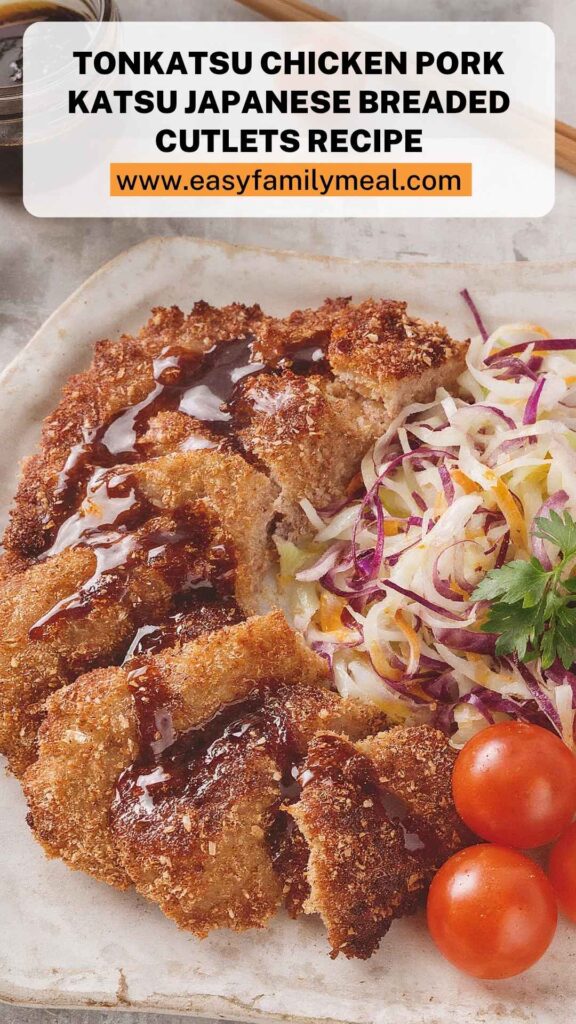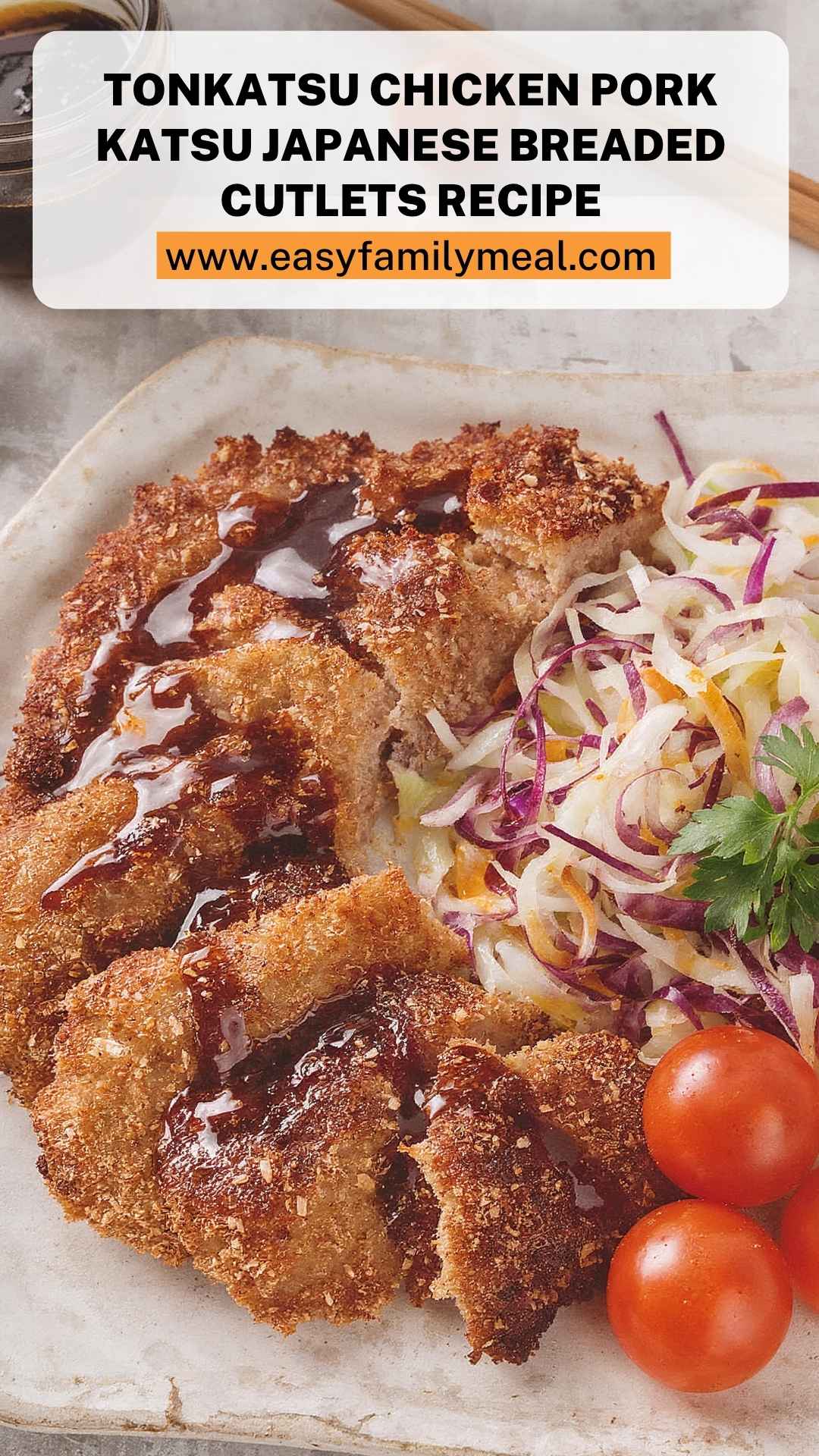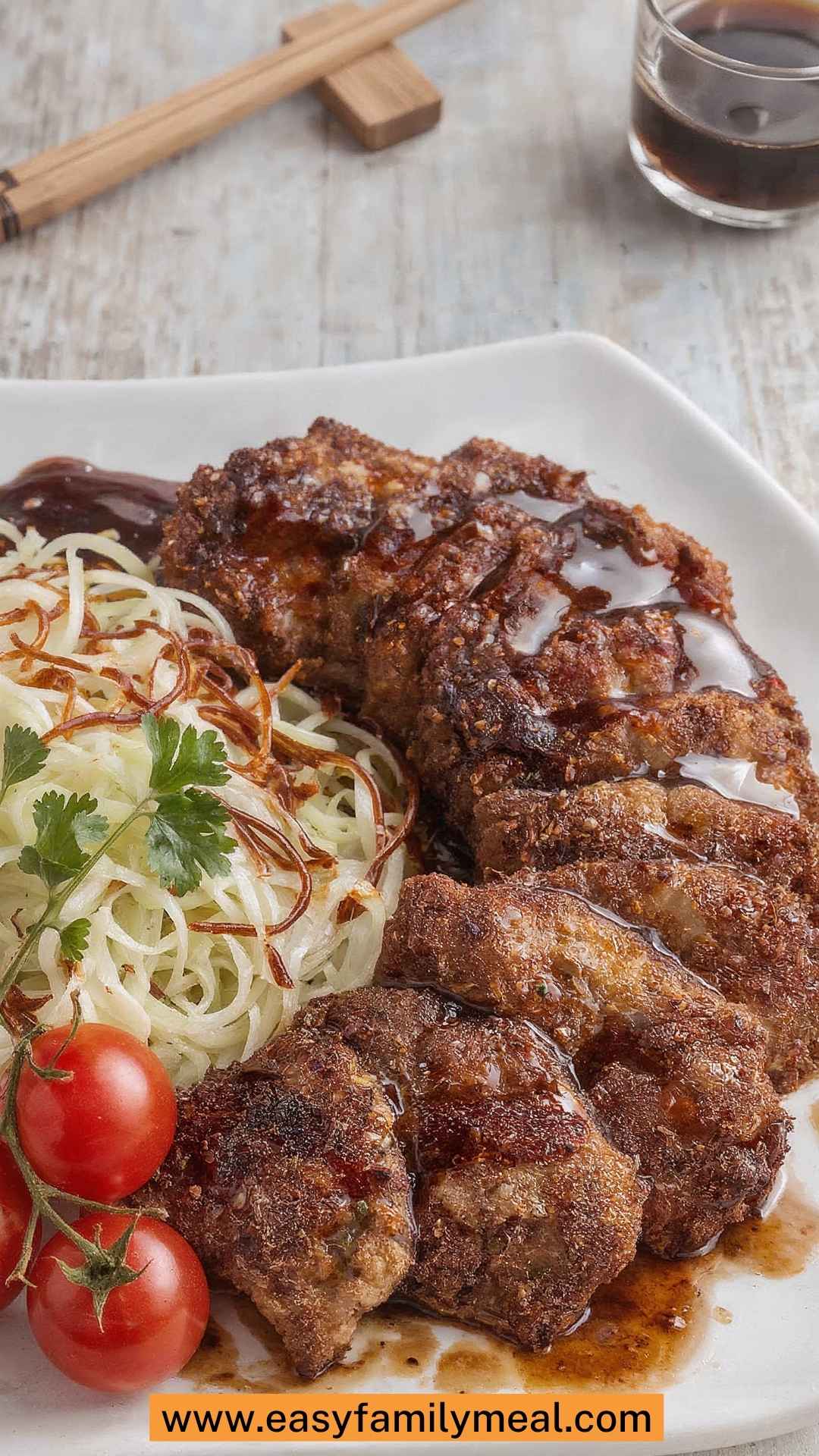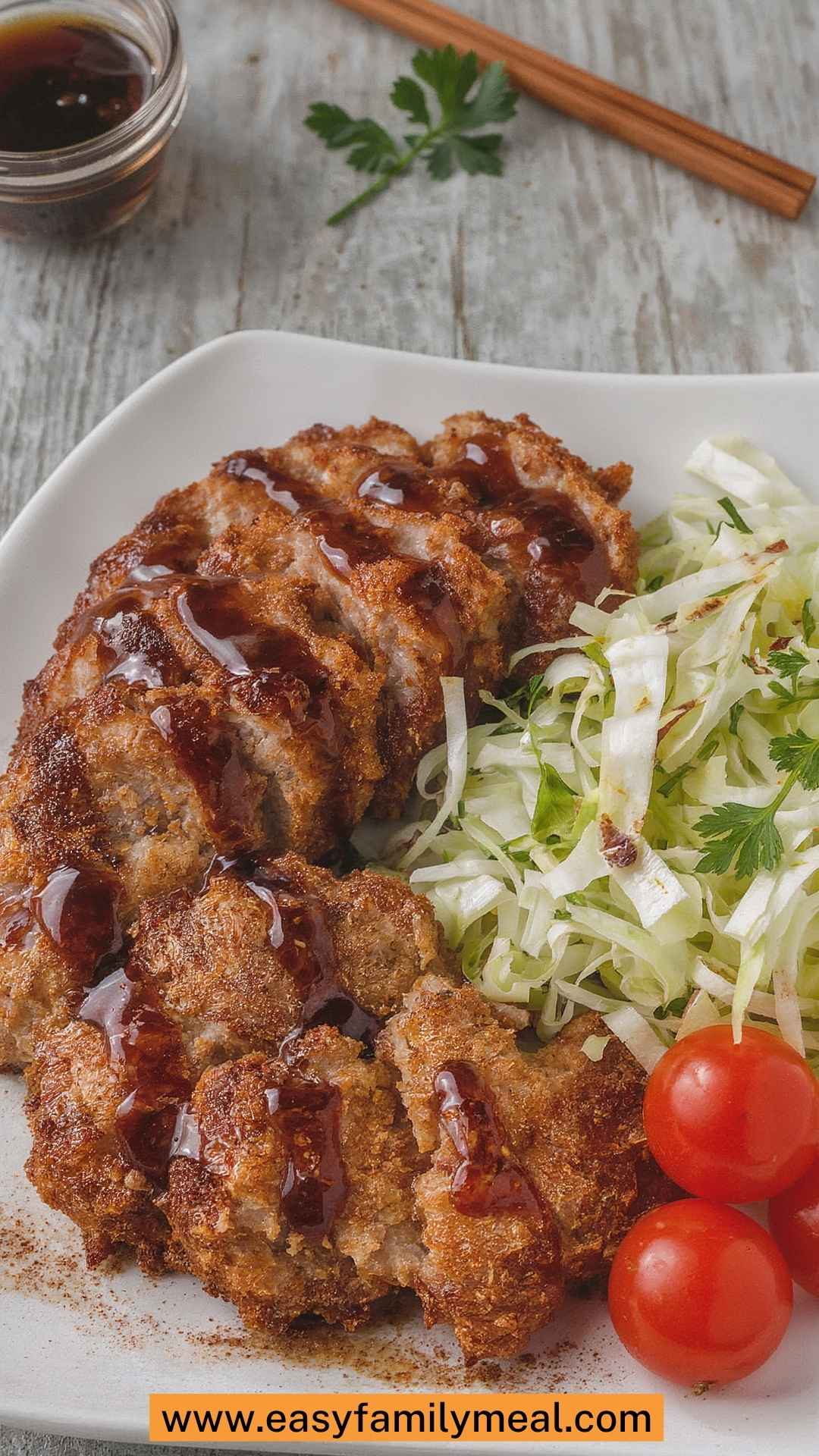Before diving into the delightful world of Tonkatsu chicken and pork katsu, let's talk about what really brings this dish to life. The right sides not only complement the crispy texture but also elevate the flavors. Picture this: a bowl of steaming white rice, fluffy and ready to soak up the flavorful juices.
Or how about a refreshing cabbage salad, the crunch acting as a fantastic contrast? Pickled vegetables provide just the right zing, while a light miso soup can warm the soul and wrap everything together in culinary harmony.
What is Tonkatsu?
Tonkatsu is quintessentially Japanese, consisting of breaded and deep-fried meat cutlets. The term "tonkatsu" derives from "ton" meaning pork, and "katsu," a shortened version of "katsuretsu," meaning cutlet.
While it traditionally uses pork, chicken katsu has gained popularity as an alternative. The dish is often served with a tangy tonkatsu sauce, shredded cabbage, and rice, providing a delightful combination of flavors and textures.
Why This Recipe Works?
1. Crispiness: The use of panko breadcrumbs gives Tonkatsu a uniquely crispy texture that you won't achieve with regular breadcrumbs. These Japanese-style breadcrumbs are coarser and allow for a crunchiness that perfectly contrasts with the tender meat.
2. Flavor Depth: Using soy sauce and garlic powder during the preparation enhances the flavor profile of the meat. This additional seasoning ensures that the cutlet is flavorful all the way through, not just on the surface.
3. Simplicity: The steps to create this dish are straightforward, making it approachable for cooks of all skill levels. With a few key ingredients and some handy tips, you'll be serving restaurant-quality Tonkatsu in no time.
4. Versatile Accompaniments: You can easily customize this dish with various sides and sauces to suit any palate. Whether you prefer the classic cabbage slaw or a modern twist with pickled veggies, Tonkatsu is adaptable to many dining experiences.
Ingredients You'll Need
Here’s a list of ingredients you’ll need for the Tonkatsu chicken and pork katsu recipe:
- 1 large egg, beaten: This helps the breadcrumbs stick to the meat.
- 100 grams crispy Japanese panko breadcrumbs: The star for that perfect crunch.
- 1000 grams bone-in pork rib chops (3 to 4 chops, about 1-inch thick each): Feel free to substitute with chicken if desired.
- ½ teaspoon fine sea salt: Essential for seasoning.
- White pepper, freshly ground to taste: Adds a subtle hint of spice.
- 2 tablespoons all-purpose flour (for dredging): The base layer before the egg and breadcrumbs.
- Vegetable oil, for deep frying: A neutral oil is best for frying.
- 1 teaspoon soy sauce (for seasoning the meat lightly before dredging): Enhance the dish's flavor.
- 1/4 teaspoon garlic powder: Adds a lovely depth without overpowering the meat.
- Tonkatsu sauce, for serving: Your quintessential tangy condiment!
How To Make These?
Let’s break it down into actionable steps for clarity:
Step 1: Prepare the Meat
Start by patting the pork chops dry with paper towels. Season both sides with salt and freshly ground white pepper. This step is crucial for flavoring the meat thoroughly.
Step 2: Dredge the Pork
Set up a dredging station. Place the all-purpose flour in one bowl, followed by the beaten egg in a second bowl, and the panko breadcrumbs in a third. First, coat each chop in flour, shaking off any excess. Then, dip them into the egg wash, making sure they’re fully covered before placing them in the panko. Press gently to ensure an even coat of crumbs.
Step 3: Heat the Oil
In a large skillet, pour enough vegetable oil to cover the bottom, about 1/2 inch deep. Heat the oil over medium-high heat. To check if the oil is hot enough, drop a small piece of panko into it; if it sizzles immediately, you’re ready to fry.
Step 4: Fry the Pork
Gently place the breaded pork chops into the hot oil. Fry each side for about 4–5 minutes or until they’re golden brown and crispy. Be careful not to overcrowd the pan, as this can cool the oil and prevent proper frying.
Step 5: Drain and Serve
Once cooked, transfer the Tonkatsu to a plate lined with paper towels to absorb excess oil. Let it rest for a few minutes before slicing. Serve with tonkatsu sauce drizzled on top or alongside, accompanied by a fresh cabbage salad.
Tips
Quality Matters: Choose high-quality pork or chicken. Fresh meat enhances the overall flavor and texture.
Control Temperature: Maintain a consistent frying temperature. If the oil is too hot, your cutlets might burn; if it’s too low, they’ll absorb more oil.
Batch Fry: If making a larger batch, keep fried cutlets warm in an oven set to low heat while you finish frying the rest.
Experiment with Sauces: While tonkatsu sauce is traditional, don’t hesitate to try homemade chili sauce or a drizzle of lemon for a zesty twist.
Slicing Technique: When slicing the cooked pork, cut against the grain. This technique makes the meat tender and easier to chew.
Nutritional Information
Per serving (based on a single pork chop serving):
- Calories: 400
- Protein: 30g
- Carbohydrates: 20g
- Fat: 25g
- Fiber: 1g
How to Store the Leftovers?
If you find yourself with leftover Tonkatsu, here’s how to store it properly:
- Allow the cutlets to cool completely.
- Wrap them tightly in plastic wrap or foil, or place them in an airtight container.
- Refrigerate for up to three days.
To reheat, bake in a 350°F oven for about 10–15 minutes until warmed through and crispy again. Avoid the microwave; it will make the breading soggy.
Recommended Side Dishes for Tonkatsu
Tonkatsu shines when paired with delightful side dishes. Here are a few excellent suggestions:
- Shredded Cabbage Salad: Fresh, crunchy cabbage dressed lightly can balance the richness of the Tonkatsu. Simple yet effective!
- Miso Soup: A warm bowl of miso soup, filled with soft tofu and seaweed, provides a comforting counterpart.
- Steamed Rice: Fluffy white rice is an ideal canvas for soaking up sauces and balances the meal beautifully.
- Pickled Vegetables: Adding a tangy element with pickles, such as tsukemono, can elevate your meal with contrasting flavors.
Substitute Options for Ingredients
If you’re missing some ingredients, don’t worry! Here are a few options for substitutions:
- Pork Chops: Chicken breast or thighs can work well for a lighter alternative.
- Panko Breadcrumbs: If panko isn't available, you can use regular breadcrumbs or even crushed cornflakes for texture.
- Soy Sauce: Tamari can replace soy sauce if you need a gluten-free option.
- Vegetable Oil: Canola oil or sunflower oil are excellent alternatives for frying.
Conclusion
There you have it! A comprehensive guide to crafting the perfect Tonkatsu chicken and pork katsu at home. It’s simple, delicious, and sure to impress anyone who takes a bite. Whether you enjoy it at a casual dinner or serve it at a gathering, Tonkatsu has a timeless charm that brings people together.
So, gather your ingredients, roll up your sleeves, and create something truly amazing. The delightful crunch of the breadcrumbs, the juicy meat, and the savory sauce await you. Happy cooking!
You’ll also like the following recipes!





